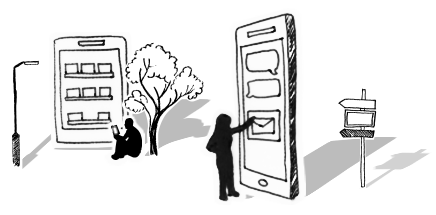




From Training Gap Analysis to Competency Gap Analysis
Now that learning often takes place outside of the classroom and is more personalised, it seems that Training Gap Analysis might be on its way out – to be replaced by Competency Gap Analysis.
A Training Gap Analysis is something that many Learning Consultants will be familiar with – a comparison between the current and desired levels of training undertaken. The broader Training Needs Analysis then takes the results of the Gap Analysis and creates a training plan to bridge the gap.
We’re now increasing performing a different type of Gap Analysis for a client, a ‘Competency Gap Analysis’ or ‘Proficiency Gap Analysis’ as it’s also known.
What’s different about a Competency Gap Analysis?
Competency Gap Analysis involves comparing how ‘good’ or ‘proficient’ we are at something, with our required level, for an individual, team or organisation.
It’s powerful because, while training is one method that we can use improve competency, it’s not the only method. It allows us to improve competence and performance through various learning approaches including:
- Practical, on the job learning
- Job shadowing
- Mentoring and coaching
- Collaborative and network based learning
- Social, online and mobile learning
- Personalised learning
As we have more methods available to us, we can create specific and tailored plans for each person to improve their competence. A Competency Development Plan for an individual could include any or all of these elements, many of them outside the classroom.
Measuring results better
With a Training Gap Analysis, the emphasis is on whether training has been offered or is available or completed. With a Competency Gap Analysis the emphasis is on the results (evidence that competence has improved).
Personalised Learning
There is another difference too. Training is something that is provided to you, competency is something personal – that you have.
It puts some responsibility on the delegate and gives them some control and flexibility in how, when and where, they learn. Crucially it also means that delegates are more empowered to drive their own learning, rather than just attending a training course or completing a module. They will want to demonstrate that they have become better at doing something, more competent.
Spreading the Risk
Competency Gap Analysis also allows us to look at where, within a team or an organisation, competence is held. Do we really need everyone in a team to be highly competent at everything or, can we just ensure that we are not at risk if someone leaves? Should we re-distribute competence around the teams? Evaluating competence allows us to focus our finite resources more effectively to reduce risk.
How do we judge competence?
If someone has a desired level of competence and they’re not at that required level, this doesn’t mean they’re incompetent! Measuring competence is about measuring the processes that we have in place to enable people to improve. It shouldn’t be used as a stick. In fact, if we as an organisation have widespread, low levels of competence in certain areas, isn’t it beneficial for us to know about this so a plan for improvement can be made?
The move from Training Gap Analysis to Competency Gap Analysis seems to result in gains all round: the delegate gains a flexible, varied set of learning solutions, the organisation can measure success and spread risk and the consultant is able to offer a service suited to the fast pace of change and innovation in learning.
I’m curious to know – are you looking at Competency with your clients? How does it work for you?
To get the latest change tips, advice and guidance directly to your inbox, sign up to our monthly Business Change Digest.

